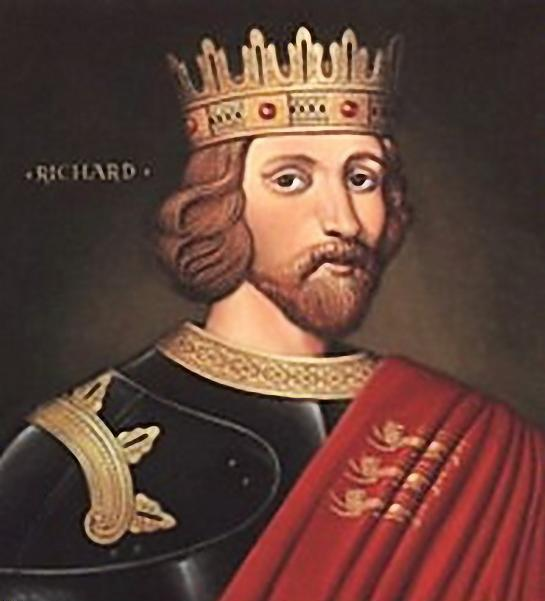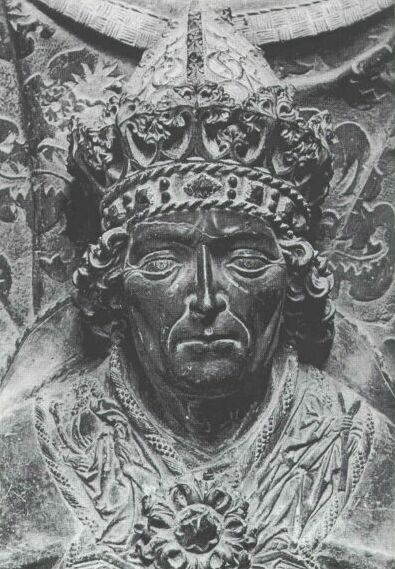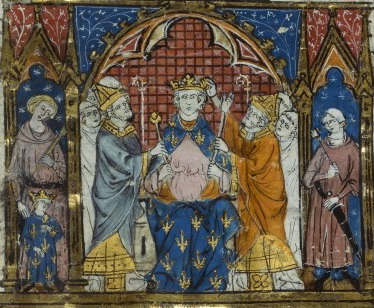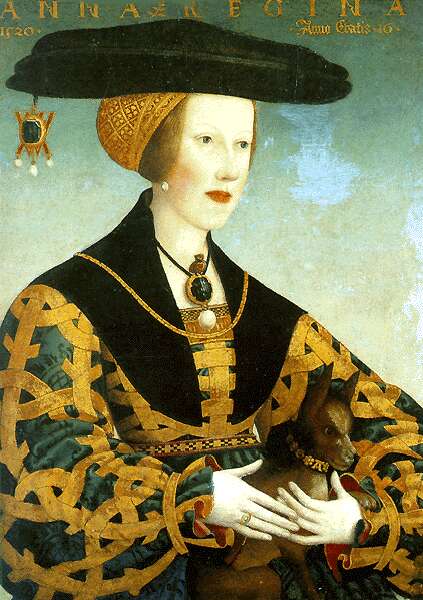|
Clemence Of Hungary
Clementia of Hungary (; 1293–13 October 1328) was List of French royal consorts, Queen of France and List of Navarrese royal consorts, Navarre as the second wife of Louis X of France, King Louis X. Life Clementia was the daughter of Charles Martel of Anjou, the titular Kingdom of Hungary, King of Hungary, and Clemence of Austria. Both parents died during her early childhood, and Mary of Hungary, Queen of Naples, Mary of Hungary, Clementia's grandmother, raised her. The family claimed Hungary through Mary, and so although Clementia was born and grew up in Naples, she was considered a Hungarian princess. Queen When Philip IV of France died, his eldest son, Louis X of France, Louis I of Navarre, became King of France. Louis' wife Margaret of Burgundy, Queen of France, Margaret had been locked up in Château Gaillard since 1314 after being found guilty of adultery by King Philip, on the testimony of, amongst others, Louis's sister Isabella of France, Isabella. Since there had be ... [...More Info...] [...Related Items...] OR: [Wikipedia] [Google] [Baidu] |
List Of French Consorts
This is a list of the women who were queen consort, queens or empresses as wives of List of French monarchs, French monarchs from the 843 Treaty of Verdun, which gave rise to West Francia, until 1870, when the French Third Republic was declared. Living wives of reigning monarchs technically became queen consorts, including Margaret of Burgundy, Queen of France, Margaret of Burgundy and Blanche of Burgundy who were kept in prison during their whole queenships. Carolingian dynasty (751-987) Capetian dynasty (987-1792, 1814-1815, 1815-1848) Direct Capetians (987-1328) House of Valois (1328-1589) House of Lancaster Some sources refer to Margaret of Anjou as Queen of France,Mary Ann Hookham: "The life and times of Margaret of Anjou, queen of England and France ", 1872 but her right to enjoy that title is disputed. She was briefly recognized only in English-controlled territories of France. (See also: Dual monarchy of England and France) Capetian dynasty House of Va ... [...More Info...] [...Related Items...] OR: [Wikipedia] [Google] [Baidu] |
Château Gaillard
Château Gaillard () is a medieval castle ruin overlooking the River Seine above the commune of Les Andelys, in the French department of Eure, in Normandy. It is located some north-west of Paris and from Rouen. Construction began in 1196 under the auspices of Richard the Lionheart, who was simultaneously King of England and feudal Duke of Normandy. The castle was expensive to build, but the majority of the work was done in an unusually short period of time. It took just two years and, at the same time, the town of Petit Andely was constructed. Château Gaillard has a complex and advanced design, and uses early principles of concentric fortification; it was also one of the earliest European castles to use machicolations. The castle consists of three enclosures separated by dry moats, with a keep in the inner enclosure. Château Gaillard was captured in 1204 by the king of France, Philip II, after a lengthy siege. In the mid-14th century, the castle was the residence of the ... [...More Info...] [...Related Items...] OR: [Wikipedia] [Google] [Baidu] |
Louis IX Of France
Louis IX (25 April 1214 – 25 August 1270), also known as Saint Louis, was King of France from 1226 until his death in 1270. He is widely recognized as the most distinguished of the Direct Capetians. Following the death of his father, Louis VIII, he was Coronation of the French monarch, crowned in Reims at the age of 12. His mother, Blanche of Castile, effectively ruled the kingdom as regent until he came of age, and continued to serve as his trusted adviser until her death. During his formative years, Blanche successfully confronted rebellious vassals and championed the Capetian cause in the Albigensian Crusade, which had been ongoing for the past two decades. As an adult, Louis IX grappled with persistent conflicts involving some of the most influential nobles in his kingdom, including Hugh X of Lusignan and Peter I of Brittany. Concurrently, England's Henry III of England, Henry III sought to reclaim the Angevin Empire, Angevin continental holdings, only to be decisively def ... [...More Info...] [...Related Items...] OR: [Wikipedia] [Google] [Baidu] |
Charles I Of Naples
Charles I (early 1226/12277 January 1285), commonly called Charles of Anjou or Charles d'Anjou, was King of Sicily from 1266 to 1285. He was a member of the royal Capetian dynasty and the founder of the House of Anjou-Sicily. Between 1246 and 1285, he was Count of Provence and County of Forcalquier, Forcalquier in the Holy Roman Empire and Count of Anjou and Count of Maine, Maine in France. In 1272 he was proclaimed Kingdom of Albania (medieval), King of Albania, in 1277 he purchased a claim to the Kingdom of Jerusalem, and in 1278 he became Prince of Achaea after the previous ruler, William of Villehardouin, died without heirs. The youngest son of Louis VIII of France and Blanche of Castile, Charles was destined for a Church career until the early 1240s. He acquired Provence and Forcalquier through his marriage to their heiress, Beatrice of Provence, Beatrice. His attempts to restore central authority brought him into conflict with his mother-in-law, Beatrice of Savoy, and th ... [...More Info...] [...Related Items...] OR: [Wikipedia] [Google] [Baidu] |
Aix-en-Provence
Aix-en-Provence, or simply Aix, is a List of communes in France with over 20,000 inhabitants, city and Communes of France, commune in southern France, about north of Marseille. A former capital of Provence, it is the Subprefectures in France, subprefecture of the arrondissement of Aix-en-Provence, in the department of Bouches-du-Rhône, in the region of Provence-Alpes-Côte d'Azur. The population of Aix-en-Provence is approximately 145,000. Its inhabitants are called ''Aixois'' or, less commonly, ''Aquisextains''. History Aix (''Aquae Sextiae'') was founded in 123 BC by the Roman consul Gaius Sextius Calvinus, Sextius Calvinus, who gave his name to its springs, following the destruction of the nearby Gauls, Gallic oppidum at Entremont (oppidum), Entremont. In 102 BC its vicinity was the scene of the Battle of Aquae Sextiae, where the Romans under Gaius Marius defeated the Ambrones and Teutones, with mass suicides among the captured women, which passed into Roman legends of ... [...More Info...] [...Related Items...] OR: [Wikipedia] [Google] [Baidu] |
Clémence D'Anjou
Clementia of Hungary (; 1293–13 October 1328) was Queen of France and Navarre as the second wife of King Louis X. Life Clementia was the daughter of Charles Martel of Anjou, the titular King of Hungary, and Clemence of Austria. Both parents died during her early childhood, and Mary of Hungary, Clementia's grandmother, raised her. The family claimed Hungary through Mary, and so although Clementia was born and grew up in Naples, she was considered a Hungarian princess. Queen When Philip IV of France died, his eldest son, Louis I of Navarre, became King of France. Louis' wife Margaret had been locked up in Château Gaillard since 1314 after being found guilty of adultery by King Philip, on the testimony of, amongst others, Louis's sister Isabella. Since there had been no formal annulment, Margaret technically became queen consort when Louis acceded to the throne upon Philip's death, though she was kept locked up. In 1315, the queen died, allegedly strangled or otherwise murd ... [...More Info...] [...Related Items...] OR: [Wikipedia] [Google] [Baidu] |
Pope John XXII
Pope John XXII (, , ; 1244 – 4 December 1334), born Jacques Duèze (or d'Euse), was head of the Catholic Church from 7 August 1316 to his death, in December 1334. He was the second and longest-reigning Avignon Papacy, Avignon Pope, elected by the Papal conclave, Conclave of Cardinal (Catholic Church), Cardinals, which was assembled in Lyon. Like his predecessor, Pope Clement V, Clement V, Pope John centralized power and income in the Papacy and lived a princely life in Avignon. John opposed the policies of Louis IV, Holy Roman Emperor, Louis IV the Bavarian as Holy Roman Emperor, which prompted Louis to invade Italy and set up an antipope, antipope Nicholas V, Nicholas V. John also opposed the Franciscans, Franciscan understanding of the poverty of Christ and his apostles, promulgating multiple papal bulls to enforce his views. This led William of Ockham to write against unlimited papal power. Following a three-year process, John Canonization of Thomas Aquinas, canonized Thoma ... [...More Info...] [...Related Items...] OR: [Wikipedia] [Google] [Baidu] |
Philip V Of France
Philip V ( 1291 – 3 January 1322), known as the Tall (), was King of France and List of Navarrese monarchs, Navarre (as Philip II) from 1316 to 1322. Philip engaged in a series of domestic reforms intended to improve the management of the kingdom. These reforms included the creation of an independent Court of Finances, the standardization of weights and measures, and the establishment of a single currency. Philip was the second son of King Philip IV of France and Queen Joan I of Navarre. He was granted an appanage, the County of Poitiers, while his elder brother, Louis X of France, Louis X, inherited the French and Navarrese thrones. When Louis died in 1316, he left a daughter and a pregnant wife, Clementia of Hungary. Philip the Tall successfully claimed the regency. Queen Clementia gave birth to a boy, who was proclaimed king as John I of France, John I, but the infant king lived only for five days. At the death of his nephew, Philip immediately had himself Coronation of the ... [...More Info...] [...Related Items...] OR: [Wikipedia] [Google] [Baidu] |
Joan II Of Navarre
Joan II (, , ; 28 January 1312 – 6 October 1349) was Queen of Navarre from 1328 until her death in 1349. Joan was the only surviving child of Louis I of Navarre and Margaret of Burgundy. Her father ascended the French throne as Louis X in 1314. Joan's paternity was dubious because her mother was involved in a scandal, but Louis declared her his legitimate daughter before he died in 1316. However, the French lords were opposed to the idea of a female monarch and elected Louis's brother king as Philip V. The Navarrese noblemen also paid homage to Philip. Joan's maternal grandmother, Agnes of France, and uncle, Odo IV of Burgundy, made attempts to secure the counties of Champagne and Brie (which had been the patrimony of Joan's paternal grandmother, Joan I of Navarre) to Joan, but the French royal troops defeated her supporters. After Philip V married his daughter to Odo and granted him two counties as her dowry, Odo renounced Joan's claim to Champagne and Brie in exchang ... [...More Info...] [...Related Items...] OR: [Wikipedia] [Google] [Baidu] |
Regent
In a monarchy, a regent () is a person appointed to govern a state because the actual monarch is a minor, absent, incapacitated or unable to discharge their powers and duties, or the throne is vacant and a new monarch has not yet been determined. The rule of a regent or regents is called a regency. A regent or regency council may be formed ''ad hoc'' or in accordance with a constitutional rule. ''Regent'' is sometimes a formal title granted to a monarch's most trusted advisor or personal assistant. If the regent is holding the position due to their being in the line of succession, the compound term '' prince regent'' is often used; if the regent of a minor is their mother, and she is wife or widow of the king, she would be referred to as ''queen regent''. If the formally appointed regent is unavailable or cannot serve on a temporary basis, a may be appointed to fill the gap. In a monarchy, a regent usually governs due to one of these reasons, but may also be elected to ... [...More Info...] [...Related Items...] OR: [Wikipedia] [Google] [Baidu] |
Reims
Reims ( ; ; also spelled Rheims in English) is the most populous city in the French Departments of France, department of Marne (department), Marne, and the List of communes in France with over 20,000 inhabitants, 12th most populous city in France. The city lies northeast of Paris on the Vesle river, a tributary of the Aisne (river), Aisne. Founded by the Gauls, Reims became a major city in the Roman Empire. Reims later played a prominent ceremonial role in history of France, French monarchical history as the traditional site of the coronation of the kings of France. The royal anointing was performed at the Cathedral of Reims, which housed the Holy Ampulla of chrism allegedly brought by a white dove at the baptism of Frankish king Clovis I in 496. For this reason, Reims is often referred to in French as ("the Coronation City"). Reims is recognized for the diversity of its heritage, ranging from Romanesque architecture, Romanesque to Art Deco, Art-déco. Reims Cathedral, the ad ... [...More Info...] [...Related Items...] OR: [Wikipedia] [Google] [Baidu] |
Queen Consort
A queen consort is the wife of a reigning king, and usually shares her spouse's social Imperial, royal and noble ranks, rank and status. She holds the feminine equivalent of the king's monarchical titles and may be crowned and anointed, but historically she does not formally share the king's political and military powers, unless on occasion acting as regent. In contrast, a queen regnant is a female monarch who rules ''suo jure'' (Latin for, "in her own right") and usually becomes queen by inheriting the throne upon the death of the previous monarch. A queen dowager is a widowed queen consort, and a queen mother is a queen dowager who is the mother of the current monarch. Titles When a title other than king is held by the sovereign, his wife can be referred to by the feminine equivalent, such as princess consort or empress consort. In monarchies where polygamy has been practised in the past (such as Morocco and Thailand), or is practised today (such as the Zulu people, Zulu ... [...More Info...] [...Related Items...] OR: [Wikipedia] [Google] [Baidu] |










